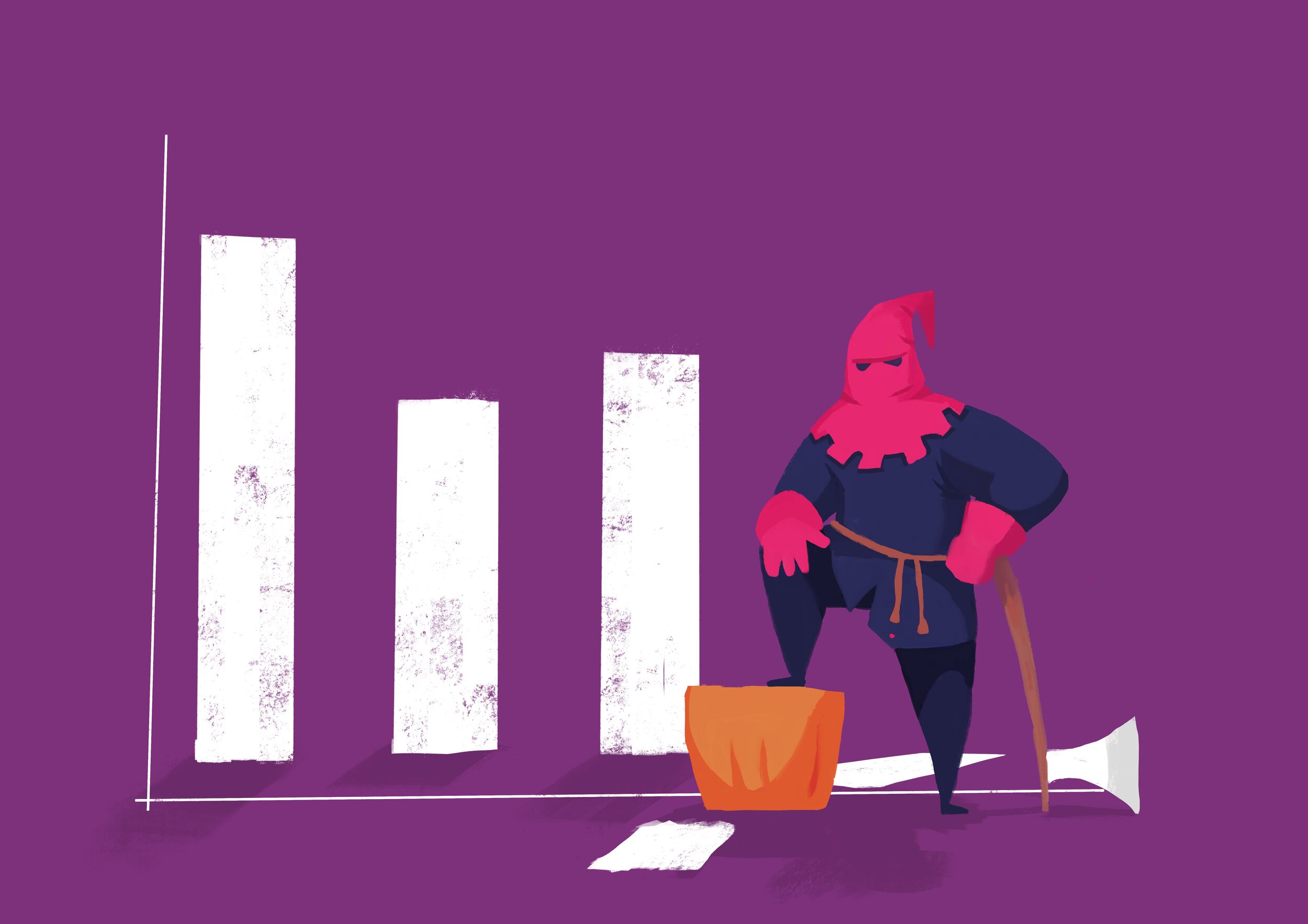The end of the bar graph?
It just might be time to do away with simple bar graphs for numeric data.
It’s not that all bar graphs are bad. However, when not used carefully, bar graphs have the potential to unnecessarily hinder a student in learning to interpret data through graphs.
With numeric data from classroom experiments at the middle or high school level, we often want students to compare averages of some measured variable across groups. What are the best graphing options for this situation?
Often students turn to a simple bar graph where the height of the bar communicates only the mean for the group. This can easily seem like a good choice because of its simplicity.
But just look at how little this graph is actually telling you:
It gives you no more information than a simple table listing the means for Group A and Group B. This graph is not taking advantage of the power to communicate with images.
I think the jittered dot plot is a much better visualization, as it shows every data point and the variation around the mean. Have a look at the detail in this dataset, which would show exactly the same bar graph as the one above:
The bar graph wasn’t telling the full story! In this (admittedly contrived) example, we see that the data is not really representable by a simple mean or median at all.
[ See more examples in this article that asks: Are your pictures really worth a thousand words? ]
Jittered dot plots allow you to see the actual values of data points, and get some insights into how the values are distributed.
I speculate that the bar graph without a representation of variation has traditionally been popular in middle and high school classes because it is not too laborious to draw with pencil and paper. I have certainly been guilty in the past of using it with my students in the past! Drawing in 100 data points on a piece of graph paper is mind numbing tedium.
At the professional levels of science, where some are discouraging the use of simple bar graphs for representing numeric data, the simple bar graph (even with error bars) carries the dangerous potential for a lazy researcher to hide some of the juicy details in their data.
Digital tools give you better options.
With computers and tablets becoming increasingly accessible, we now can let computers to do all the drudgery of plotting points, and let students focus on the higher order task of interpretation. You can whisk up a dot plot in seconds with the right tool (unfortunately Excel and Sheets make this pretty hard). Now that it is easy to do so, why not show each data point?
You can even have the best of both worlds by having the computer add visuals like a mean, error bars, or box plot on top of or beside a jittered dot plot. Aren’t these options all much more informative as a visualizations?
We hope you are convinced and ready to move your students away from the simple bar graph to show numeric data. There is so much more to be learned by showing each data point!





